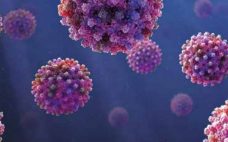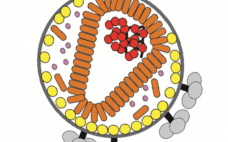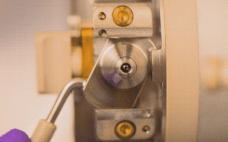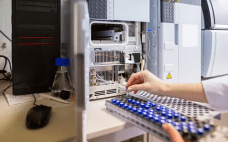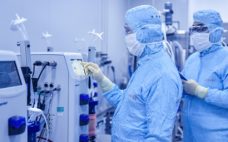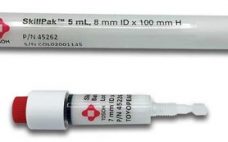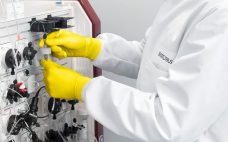This webcast features: Maya Yovcheva, R&D Scientist, Cell Biology, Chantelle Gaskin, Field Applications Scientist, Purification, and Florian Durst, Sr. Field Application Specialist, Pharma Analytics, Thermo Fisher Scientific Being part of the newer generation of vaccines, virus-like particles (VLPs) have proven to be effective in humans as well as animals. VLPs mimic the structure of the virus particles they are derived from and are highly immunogenic, but they lack the virus genomic material which gives them a favorable safety profile. The…
Downstream
Manufacturing a Recombinant Retrovirus: Downstream Purification Process Development through GMP Implementation
This webcast features: Mark Fitchmun, President and CEO, Somatek, Inc. Purification of enveloped viruses and virus-like particles presents several challenges due to their large size and complexity. In this webinar, a case study will be presented and will detail the importance of resin screening, endonuclease treatment, process development, and the scale-up purification of a retrovirus-like particle intended for use in human subjects. The resulting current good manufacturing practice (CGMP) compatible process required approximately four hours to purify 240 L of…
Increase Efficiency in Your Manufacturing With the Right Buffer Management Strategy
This webcast features: Jenny Dunker, Global Product Manager, and Alex Troken, Global Product Manager, Cytiva Buffer preparation is still a highly manual activity in the biopharmaceutical industry that often requires a lot of resources due to the large number and overall volume of buffers and process liquids used in a typical bioprocess workflow. Most companies are still relying on the traditional ways of preparing buffers, but there are more modern, alternative buffer preparation methods that can bring significant savings and…
HCP Analysis using Mass Spectrometry: Strategies for Your Process Development Toolkit
This webcast features: Dr. Christina Morris, Senior Scientist, BioPharmaSpec Expression systems of either mammalian, yeast, or bacterial origin are commonly used as host cells for the production of biopharmaceuticals. As a consequence of using these systems, endogenous host cell proteins (HCPs) will inevitably copurify or will be coexpressed and contaminate the product material. It is a regulatory requirement to identify and monitor process-related impurities such as HCPs, and a qualitative and quantitative assessment of the components in the final drug…
Understanding Viral Clearance During Anion Exchange Chromatography by Using a Novel Design of Experiment Approach
This webcast features: Moira Lynch, Innovation Leader, Purification and Pharma Analytics, Thermo Fisher Scientific, and Zhijun (George) Tan, Associate Scientific Director, Bristol Myers Squibb Demonstrating viral clearance of a downstream process is a requirement for drug candidates such as monoclonal antibodies (mAbs) that proceed to phased clinical trials. Due to the specialized nature of viral clearance studies, these studies are often outsourced to dedicated companies, making this a costly process. This expense pushes these studies off until absolutely necessary and…
MS-Based Impurities Investigations in Biopharmaceutical Laboratories
This webcast features: Andrew Hanneman, Scientific Advisor, Charles River Laboratories One of the major challenges to developing successful biopharmaceutical products is understanding and characterizing potential impurities. Finding the source and magnitude of these impurities allows us to minimize and remove them during the manufacturing process to create a safe and effective drug. Development also needs to include supporting stability and forced degradation studies to ensure long-term safety and efficacy. Some impurities, such as protein degradants, host cell proteins, and various…
Lentiviral Vector Platform Generation: Increase Titer and Yield with Greater Predictability
This webcast features: Xin Xin, Group Leader, Small-Scale Upstream Process Development, and Senthil Kumar Kuppuswamy, Associate Principal Scientist, Downstream Process Development, WuXi Advanced Therapies The field of cell and gene therapies has expanded rapidly in the past several years. Lentiviral vectors have been in great demand as gene carriers in this field, especially for ex vivo gene therapies. However, large-scale lentiviral vector production still remains a significant challenge. WuXi Advanced Therapies has worked with Lentivirus since 2015 and it launched…
Improving and Intensifying Vaccine Purification By Implementing Affinity Chromatography
This webcast features: Zoltan Gulyas, Field Applications Specialist, Thermo Fisher Scientific Vaccines are well-established tools in the fight to eradicate infectious diseases. Over the past few decades, vaccine production has advanced significantly, largely by the introduction of new molecule modalities. However, these new types of vaccine candidates often require multiple chromatographic steps to obtain the desired level of purity. Developing an efficient purification process using the classical surface chemistries such as ion exchange and hydrophobic interaction requires significant amounts of…
How to Halve the Costs of Antibody Purification?
This webcast features:Â Romain Dabre, Senior Product Manager, Tosoh Bioscience Downstream processing is responsible for up to 80% of the entire production costs of biotherapeutics. Given the current drive to reduce manufacturing costs for biological therapeutics, streamlining downstream processing is necessary for chromatographers and process engineers. In this presentation, we showcase the benefits of using only two chromatography processes to purify monoclonal antibodies compared to the standard industrial process. Combining high-performance Protein A capturing and a single polishing step on salt-tolerant…
Best Practices for Ensuring High Virus Clearance When Using Anion Exchange Membrane Adsorbers
This webcast features: Sherri Dolan, Global Technology Consultant, Separations Marketing Group, Sartorius Stedim Biotech The risk of viral contamination is a concern for all biopharmaceuticals and vaccines derived from cell lines and can have serious implications. Contamination events can cost millions of dollars in investigation, clean-up, corrective action, and manufacturing plant downtime. Most importantly, such events pose a safety risk to the patient. To ensure the safety of biological products, regulatory agencies require manufacturing processes to have a validated current…

